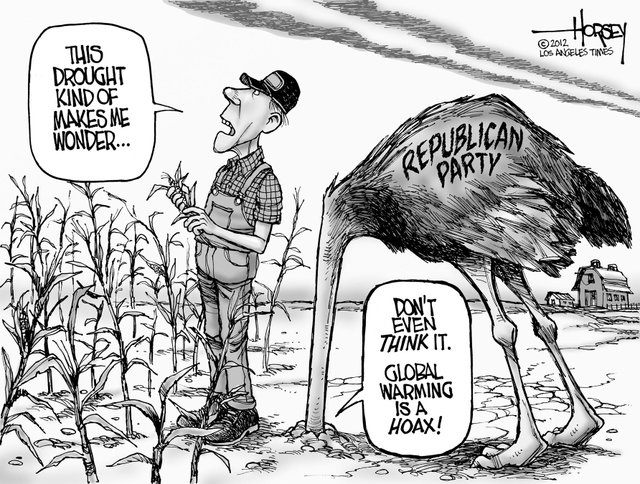Going for the Green
Ever since global climate change became prominent in politics, the majority of Republicans have rejected the idea and the scientific evidence behind it. Because of this, many Republicans feel that shifting our energy consumption from primarily fossil fuel-based to renewable-based is pointless, and block any legislation promoting that shift. On the other hand, the Democratic Party has assumed the position of the ‘climate change party’, and has been pushing for legislation to create new jobs in renewable energy.
The problem is that they are presenting their proposal wrong; the Democratic Party is not gaining any ground by restating the same facts and statistical proof backing the veracity of climate change. Democrats need to start speaking with Republican vernacular, and there is one word that never fails to get a Republican’s attention: money.
So what if the world is slowly burning to a crisp? It doesn’t matter from a climate change-denier’s point of view. What may appeal to these people is how much shifting to renewable energy will stimulate the economy, and how if they invest in it early they may earn some big bank.
According to a report by the Political Economy Research Institute (PERI), the American Recovery and Reinvestment Act, which was passed Feb. 2009 under the Obama administration, and the American Clean Energy and Security Act, which failed to pass through both House and Senate in June 2009, would have together generated $150 billion in primarily private-sector investments. Additionally, the two acts were projected to create a net gain of 1.7 million jobs in renewable energy.
Although the second of the two acts didn’t pass, the American and Reinvestment Act was successful in growing the workforce. According to the Environmental Defense Fund (EDF), jobs in renewable energy currently account for about 4 to 4.5 million jobs in the U.S, up from 3.4 million in 2011. That is about 1.3 percent of the total population of the U.S and 2.7 percent of the workforce.
This may sound like a small number, but take into account that, according to a report by the Bureau of Labor Statistics published this April, there are only 183,300 jobs in coal-related jobs. This is .05 percent of the total population of the U.S. and .019 percent of the workforce.
So the next time a Trump voter brings up how he will bring back the coal industry, explain to them that the coal industry is dead, and that renewable energy is where workers in the energy industry should move to.
Some conservatives will still argue that no matter how much federal funding we put into renewable energy, it will still be far more expensive and less efficient than fossil fuels. In reality, renewable energy is either the same price or cheaper than fossil fuels. According to a report conducted by Lazard.com, the cost of coal ranges from $60 to $143 per kilowatt hour in the U.S. In comparison, the cost of solar power in a community setting costs $78 to $135 per kilowatt hour, and cost of wind power is $32 to $62 per kilowatt hour. This doesn’t even take into account the fact that it takes money to source and mine for coal and other fossil fuels, while the wind and the sun are free resources.
America is far behind in investing in renewable energy. Many European nations have already made big steps towards consuming primarily renewable energy. For example, Sweden announced at a UN General Assembly in 2015 that it plans to become fully renewable energy dependent by 2050. And, according to Danish energy expert Hans Henrik Lindboe, Denmark hopes to consume 84 percent wind power out of all of their energy resources by 2035.
But enough about socialist Europe. Conservatives are tired of hearing about how ‘progressive’ Europe is. Let’s get back to talking about money. Renewable energy is getting cheaper and cheaper each year. According to a report by Berkeley Lab, the median price of solar energy in a residential area per watt dropped from $7 in 2010 to $4 in 2015. According to a report by the World Economic Forum, solar energy became cheaper than fossil fuels in 30 countries in 2016. In the future, wind energy costs are predicted to drop by 24%-30% by 2030, and 35%-41% by 2050. The costs of renewable energies are dropping because of improvements in technology, which can be accelerated if we invest more money into research for renewable energy, which will ultimately drop the prices further.
So what are we waiting for? We have a jackpot of gold staring us in the face, yet conservative politicians are choosing not to grab it. For those of us that promote renewable energy, we have to inch that bag of gold just a little bit closer to them and explain to them the economic benefits of renewables. Then, maybe, they might just go for the gold.









